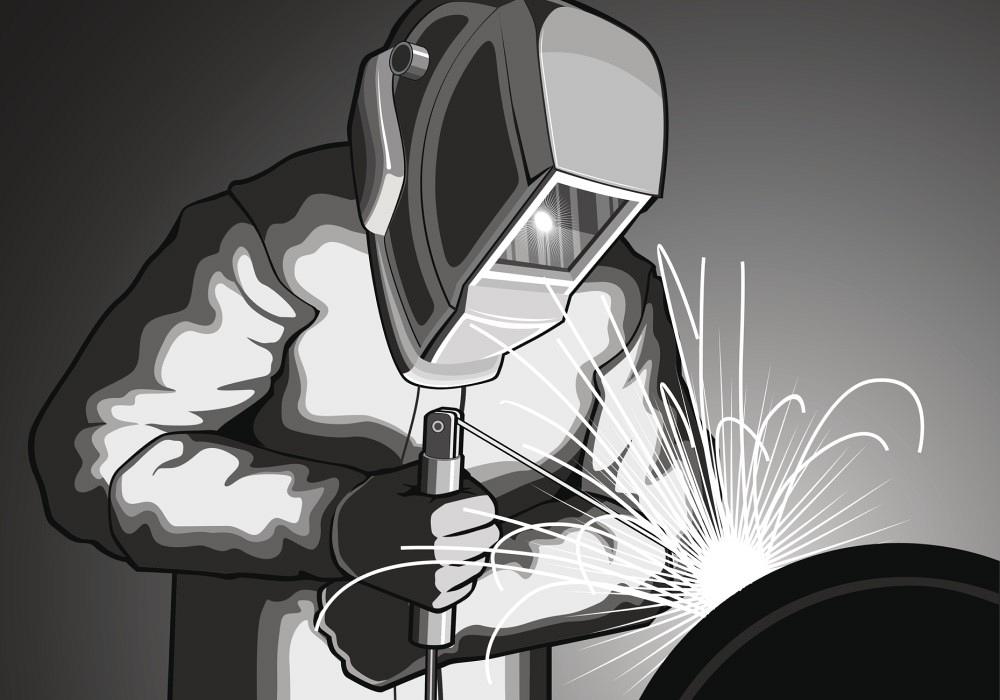Advanced Welding WPS: Tailoring Specifications for Facility Tasks
Advanced Welding WPS: Tailoring Specifications for Facility Tasks
Blog Article
The Ultimate Guide to Welding WPS Procedures: An Extensive Review for Welders
In the complex world of welding, Welding Treatment Specifications (WPS) offer as the foundation of ensuring top quality, consistency, and safety and security in welding procedures (welding WPS). As we delve right into the various components of a WPS and explore the ins and outs of qualification and certification, we will uncover the important role these treatments play in the world of welding.
Relevance of WPS Procedures
Comprehending the importance of Welding Treatment Specifications (WPS) treatments is crucial for making certain the high quality and integrity of welded structures. WPS procedures offer as a roadmap for welders, laying out the essential actions, specifications, and products required to accomplish a sound weld. By sticking to WPS standards, welders can make certain uniformity in their job, bring about structurally audio and reliable welds.
One of the key reasons why WPS treatments are important is their function in keeping weld top quality and honesty. Following the specified welding specifications and methods detailed in the WPS assists avoid flaws such as porosity, fracturing, or incomplete combination, which can endanger the toughness and longevity of the weld.

Components of a WPS
A Welding Treatment Requirements (WPS) commonly consists of crucial components that detail the particular demands for carrying out a weld, making certain uniformity and quality in the welding process. The crucial elements of a WPS consist of necessary variables such as base metals, filler metals, preheat and interpass temperature levels, welding procedures, shielding gases, welding placements, and post-weld heat treatment requirements.
Base metals refer to the products being signed up with, while filler metals are utilized to fill the gap in between the base steels during welding. The welding procedure describes the certain technique to be utilized, whether it's gas steel arc welding (GMAW), secured steel arc welding (SMAW), or another method. Welding settings define the alignments in which welding can be done.

Qualification and Accreditation
Having developed the vital components of a Welding Procedure Specification (WPS), the emphasis currently changes towards the vital facets of qualification and certification in welding methods.

Certification, on the various other hand, is the official recognition of a welder's credentials by a relevant accreditation body or company. Welding certifications are typically based upon the specific welding processes, products, and settings a welder is certified to collaborate with. Holding a legitimate welding accreditation demonstrates that a welder fulfills market requirements and is competent to do welding tasks to the required specifications.
Developing a WPS
To develop a Welding Treatment Specification (WPS) that meets sector standards, cautious consideration of welding processes, materials, and functional parameters is important. The initial step in creating a WPS is to determine the welding process to be utilized, such as gas metal arc welding (GMAW) or secured metal arc welding (SMAW)

Executing and Keeping An Eye On WPS
Upon finalizing the thorough Welding Procedure Spec (WPS) that carefully details welding processes, products, functional criteria, and top quality guarantee procedures, the emphasis shifts to efficiently implementing and keeping an eye on the established treatments. Application involves ensuring that all welders involved in the project know with the WPS and follow it thoroughly during the welding procedure. This requires giving appropriate training and supervision to ensure adherence to the specified treatments. Monitoring the WPS includes continuous oversight to confirm that welding tasks line up with the documented requirements. Examinations, screening, and top quality control procedures are important elements of the tracking procedure to identify any type of problems or inconsistencies immediately. Regular audits and evaluations of the welding procedures assist in keeping consistency and top quality throughout the project. Reliable special info implementation and monitoring of the WPS are vital for ensuring the integrity, stamina, and security of the welded joints, ultimately adding to the overall success of the welding job.
Final Thought
Finally, understanding and following Welding Treatment Specifications (WPS) is vital for welders to ensure high quality, uniformity, and safety and security in their job. By understanding the parts of a WPS, getting appropriate certifications and accreditations, producing thorough treatments, and implementing and checking them efficiently, welders can improve their abilities and efficiency in welding practices. Abiding by WPS procedures is vital for generating top quality welds and meeting sector criteria.
In the elaborate world of my site welding, Welding Procedure Specs (WPS) serve as the backbone of guaranteeing quality, consistency, and safety and security in welding procedures. The welding procedure lays out the specific technique to be made use of, whether it's gas steel arc welding (GMAW), secured steel arc welding (SMAW), or one more method.To published here create a Welding Procedure Specification (WPS) that satisfies market criteria, mindful consideration of welding processes, products, and operational criteria is necessary. The first step in creating a WPS is to recognize the welding procedure to be used, such as gas metal arc welding (GMAW) or shielded metal arc welding (SMAW)Upon completing the thorough Welding Procedure Spec (WPS) that thoroughly information welding processes, materials, operational parameters, and top quality assurance procedures, the emphasis changes to successfully carrying out and keeping track of the well-known procedures.
Report this page